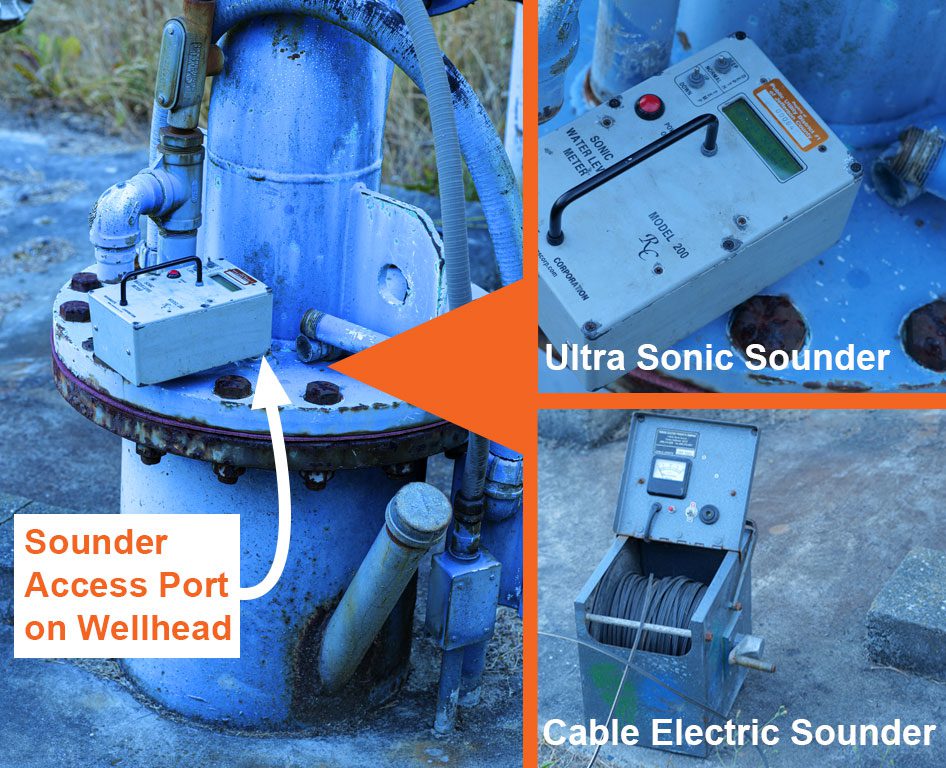A Ground Level look at Well Sounding
The PUD routinely monitors well water levels for indicators signaling high usage, drought-like conditions and to gauge aquifer recharge. Water sources throughout much of eastern Jefferson County are recharged by precipitation almost exclusively, relying on fall and winter rains.
Jefferson PUD conducts wellhead “soundings,” monthly at each of its 9 Group A water systems as recommended by the Washington Dept of Health. Group A systems are designated as serving 25 or more water connections for more than 60 days each year or 15 or more full-time connections.
Fun Fact: Essentially all local well water temperature (at depth) is 50 degree Fahrenheit. This reflects the averaged annual air temperature for our region.
Soundings are commonly done using an ultrasonic sounder. An ultrasonic sounder emits a frequency which bounces off the water’s surface below to determine depth. The sounder is inserted into a port at the top  of the wellhead and registers the depth (distance from measuring point to water surface) in feet.
of the wellhead and registers the depth (distance from measuring point to water surface) in feet.
Not all wellheads provide direct access for our sounder, so the water team also employs a graduated cable electric sounder. At the end of the cable (which features gradation marks) are metal beads which, when in contact with the water table, meters a connection and generates a beeping sound for the water crew on ground level.
Each well, when drilled, is meticulously documented determining—among other things—the wells static water level (an average “still” water level) and draw down (pumping) level. A pump test—think of it as an aquifer stress test—is often required to determine how much water a well can sustainably pump. Monitoring levels in adjacent wells and recovery after pumping is essential to acquire aquifer statistics, such the rate at which water moves in the aquifer and its storage properties.
In daily activities, recovery rates for PUD wellheads vary from several hours to a full day or more. Recovery rate helps PUD staff determine aquifer productivity, and regular soundings provide production information for each water source to help determine when water usage advisories should be implemented.